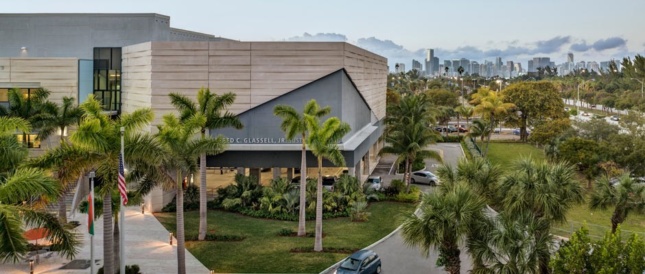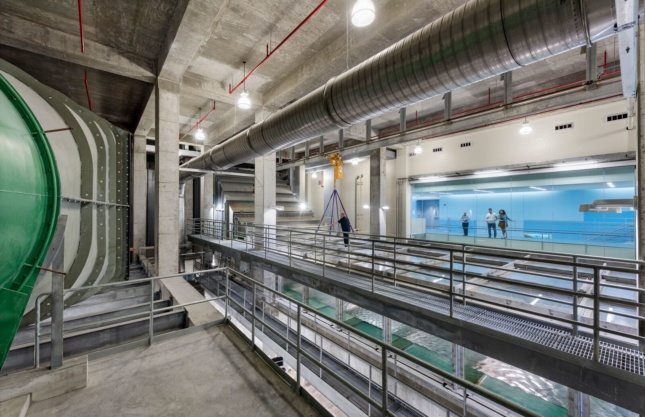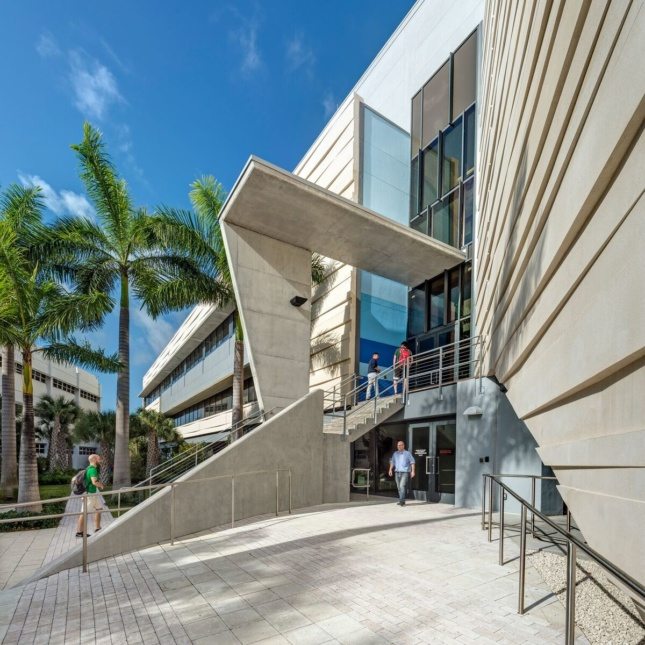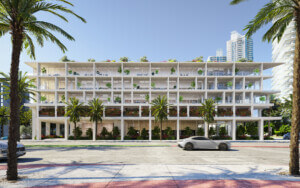Architects at Boston’s CambridgeSeven have recently completed work on a sea study lab that includes the world’s largest hurricane simulator. The 86,000-square-foot space, part of the Rosenstiel School of Marine and Atmospheric Science at the University of Miami, was pummeled by 2017’s Hurricane Irma, but its ultra weatherproof design enabled the building to survive the storm relatively unscathed.

Perhaps the most distinctive component of the facility, officially known as Marine Technology and Life Sciences Seawater (MTLSS) Research Complex, is its hurricane simulator. The two-story storm room holds the SUrge-Structure-Atmospheric INteraction (SUSTAIN) lab, three wave and wind tanks that researchers deploy to ravage model cars and homes so they can better predict the path of hurricanes and understand the physics behind storm strength.
During Irma, the facility was subjected to the conditions it was built to study, and after the Category 4 storm subsided, the wind and wave tanks became temporary homes for fish from other labs displaced by flooding. In spite of—or perhaps owing to—natural disasters like Irma, though, the MTLSS complex maintains a strong connection to the sea: Water from Biscayne Bay is filtered for heat and cooling purposes, as well as purified for use in the facility’s overflow-resistant seawater tanks, which together hold 38,000 gallons. The entire three-story facility, which includes offices and classrooms in addition to labs, is raised 15 feet above ground, a flood-proofing must in Miami.
A video released by the University of Miami goes on a deep dive into the facility:














